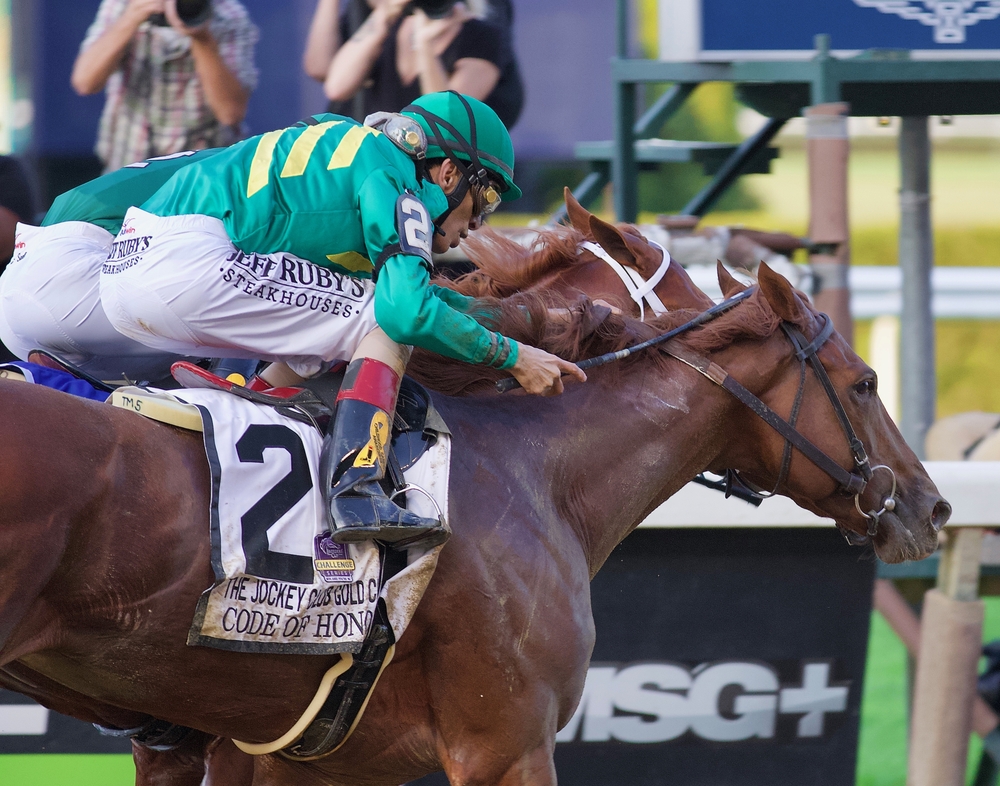Walkovers are a common occurrence in tennis tournaments, but what exactly is a walkover? In tennis, a walkover happens when a player is unable to participate in a scheduled match due to unforeseen circumstances such as injury or illness. As a result, the opponent is declared the winner and proceeds to the next round of the competition.
While walkovers are not uncommon in the world of tennis, they can have significant implications for both players involved. For the player who cannot participate, it can mean missing out on valuable ranking points, prize money, and the opportunity to advance in the tournament. For the advancing player, it can mean a less competitive match in the next round, potentially affecting their overall performance in the tournament.
Understanding the rules and regulations governing walkovers is important for both players and fans of the sport. In this article, we will delve deeper into the definition of a walkover in tennis, the reasons they occur, and the impact they can have on a player’s career. We will also explore notable instances of walkovers and how they are handled in other sports.
Key Takeaways
- Walkovers occur in tennis when a player is unable to participate in a scheduled match due to unforeseen circumstances.
- Walkovers can have significant implications for both players involved, affecting ranking points, prize money, and overall tournament performance.
- Understanding the rules and regulations governing walkovers is important for both players and fans of the sport.
Understanding Walkovers in Tennis
In tennis, a walkover is a term used when a player advances to the next round or wins a match without playing due to various reasons. This could be because their opponent is ill, injured, disqualified, or has withdrawn from the tournament.
A walkover is different from a retirement, which occurs when a player withdraws during a match, conceding to their opponent. In a walkover, the player does not even show up to play, and the match is awarded to the other player.
Walkovers are not uncommon in tennis tournaments, especially in the early rounds when players may withdraw due to injuries or illness. In some cases, a walkover can work in favor of a player, as it allows them to conserve their energy for the next round. However, it can also be frustrating for players who are eager to compete and may feel disappointed at not having the opportunity to play.
The rules for walkovers in tennis are straightforward. If a player is unable to compete due to injury or illness, they must inform the tournament referee before their scheduled match. If the player fails to do so and does not show up for the match, they may be subject to fines or other penalties.
In conclusion, a walkover is a term used in tennis to describe a situation where a player advances to the next round or wins a match without playing due to various reasons. While it is not uncommon in tennis tournaments, it can be frustrating for players who are eager to compete. The rules for walkovers are straightforward, and players must inform the tournament referee if they are unable to compete.
Reasons for Walkovers
Walkovers in tennis occur due to various reasons. Some of the most common reasons for walkovers are:
Player Injuries and Illnesses
Injuries and illnesses are the most common reasons for walkovers in tennis. If a player is injured or ill, they may not be able to participate in a scheduled match. In such cases, the opponent automatically advances to the next round without playing. Walkovers due to injuries and illnesses are not considered defaults or forfeits.
Administrative Errors
Administrative errors can also lead to walkovers in tennis. For example, if a player is not listed in the tournament draw, they may not be able to participate in the match. Similarly, if a player is scheduled to play at the wrong time or on the wrong court, they may miss their match. In such cases, the opponent is declared the winner by walkover.
Personal Circumstances
Personal circumstances can also lead to walkovers in tennis. If a player has a personal issue or reason that prevents them from playing, they may not be able to participate in the match. For example, a player may have to withdraw from a match due to a family emergency or other personal reasons. In such cases, the opponent is declared the winner by walkover.
It is important to note that walkovers due to personal circumstances are not considered defaults or forfeits. Walkovers are only considered defaults or forfeits if a player withdraws from a match due to reasons that are not considered unforeseen circumstances, such as a late withdrawal or a refusal to play.
Implications of a Walkover
A walkover in tennis can have significant implications for both players and the overall competition. In this section, we’ll explore the various implications of a walkover in tennis.
Advancement to Next Round
When a player receives a walkover, they automatically advance to the next round without having to play. This can provide an advantage in terms of additional rest time and less physical and mental fatigue. However, it can also disrupt tournament schedules and impact a player’s match practice.
Impact on Player Ranking
A walkover can have an impact on a player’s ranking points and rankings. If a player receives a walkover in the early rounds of a tournament, they will receive fewer ranking points than if they had won the match. However, if a player receives a walkover in the later rounds of a tournament, they will receive the same ranking points as if they had won the match. This can have a significant impact on a player’s ranking and their ability to qualify for future tournaments.
Prize Money and Fines
When a player receives a walkover, they are still entitled to any prize money that they would have received if they had played and won the match. However, players who withdraw from a tournament due to injury or illness may be subject to fines under the ATP, WTA, USTA, or LTA’s code of conduct penalty system. These fines can range from a few hundred to several thousand dollars, depending on the severity of the violation.
In conclusion, a walkover in tennis can have a range of implications for players and the overall competition. While it can provide advantages such as automatic advancement to the next round and additional rest time, it can also impact a player’s ranking and disrupt tournament schedules. Governing bodies such as the ATP, WTA, USTA, and LTA have penalty systems in place to discourage players from withdrawing from tournaments without a valid reason.
Notable Instances of Walkovers
Novak Djokovic’s Walkovers
Novak Djokovic has had a few walkovers in his career, including one at the Western & Southern Open in 2020. His opponent, Jenson Brooksby, withdrew from the match due to an injury, giving Djokovic an uncontested win. Djokovic has also been on the other side of walkovers, having won matches due to his opponent being disqualified or retiring.
Serena Williams’ Walkovers
Serena Williams has had a few walkovers in her career, including one at the Olympic Games in 2021. Her opponent, Elena Rybakina, withdrew from the match due to an injury, giving Williams an uncontested win and advancing her to the next round. Williams has also had walkovers due to her opponents being disqualified or retiring.
Rafael Nadal’s Walkovers
Rafael Nadal has had a few walkovers in his career, including one at the Australian Open in 2018. His opponent, Leonardo Mayer, withdrew from the match due to an injury, giving Nadal an uncontested win and advancing him to the next round. Nadal has also had walkovers due to his opponents being disqualified or retiring.
Naomi Osaka’s Walkovers
Naomi Osaka has had a few walkovers in her career, including one at the Western & Southern Open in 2021. Her opponent, Olga Danilovic, withdrew from the match due to illness, giving Osaka an uncontested win and advancing her to the next round. Osaka has also had walkovers due to her opponents being disqualified or retiring.
Nick Kyrgios’ Walkovers
Nick Kyrgios has had a few walkovers in his career, including one at the Wimbledon Championships in 2019. His opponent, Jordan Thompson, withdrew from the match due to an injury, giving Kyrgios an uncontested win and advancing him to the next round. Kyrgios has also had walkovers due to his opponents being disqualified or retiring.
Roger Federer’s Walkovers
Roger Federer has had a few walkovers in his career, including one at the French Open in 2021. His opponent, Matteo Berrettini, withdrew from the match due to an injury, giving Federer an uncontested win and advancing him to the next round. Federer has also had walkovers due to his opponents being disqualified or retiring.
In conclusion, walkovers are a common occurrence in tennis, and can happen for a variety of reasons such as injury, illness, disqualification, or retirement. While they may not be the most exciting way to win a match, they are a legitimate way to advance in a tournament.
Walkovers in Other Sports
Walkovers are not exclusive to tennis, and they can occur in other sports as well. In this section, we will take a closer look at walkovers in horse racing and other individual sports.
Walkovers in Horse Racing
In horse racing, a walkover occurs when a horse is the only runner in a race. This can happen when all the other horses in the race are scratched, or when a race is scheduled with only one horse. Walkovers are rare in horse racing, but they do happen occasionally.
According to the Jockey Club Rules of Racing, a horse must still complete the course in order to be declared the winner. If the horse fails to complete the course, the race is declared void.
Walkovers in Other Individual Sports
Walkovers can also occur in other individual sports, such as boxing, wrestling, and martial arts. In these sports, a walkover occurs when one competitor is unable to compete due to injury or illness. The other competitor is then declared the winner by default.
Walkovers can also occur due to unsportsmanlike behavior. For example, if a competitor fails to show up for a scheduled match, they may be disqualified and the other competitor may be declared the winner by default.
Statistics show that walkovers are more common in individual sports than in team sports. This may be due to the fact that individual competitors are more likely to experience energy depletion or emergency situations that prevent them from competing.
Overall, walkovers are a rare occurrence in sports, but they do happen from time to time. While they may be disappointing for fans and competitors alike, they are a part of the sports world and are governed by specific rules and regulations.
Rules and Regulations Governing Walkovers
When it comes to walkovers in tennis, there are specific rules and regulations that govern the outcome of a match. These rules and regulations are enforced by different governing bodies, including ATP, WTA, USTA, and LTA. In this section, we will explore the different rules and regulations governing walkovers in tennis.
ATP and WTA Rulebook
According to the ATP and WTA rulebook, a walkover occurs when a player is unable to play due to illness, injury, or any other valid reason. If a player withdraws before the commencement of a match, the opponent is awarded a walkover victory. The player who withdrew will receive no ranking points, and the opponent will receive the ranking points allocated for that round.
USTA and LTA Guidelines
The USTA and LTA have their own set of guidelines for walkovers. If a player withdraws from a match due to personal circumstances or administrative errors, the opponent is awarded a walkover victory. However, if a player withdraws due to a code of conduct penalty, the opponent will not be awarded a walkover victory.
Code of Conduct and Penalties
The Code of Conduct and Penalties is a set of rules that governs the behaviour of players during a match. If a player violates the Code of Conduct, they may receive a point penalty, game penalty, or even disqualification. If a player is disqualified due to a Code of Conduct violation, they will be considered to have lost the match by default, and their opponent will be awarded a walkover victory.
In conclusion, walkovers in tennis are governed by specific rules and regulations that vary depending on the governing body and the tournament. It is essential for players to understand these rules and regulations to avoid any penalties or disqualifications.
Frequently Asked Questions
What is the impact of a walkover on a tennis player’s ranking?
A walkover has no impact on a player’s ranking. Since the player did not play the match, they do not receive any points or ranking benefits. However, if a player receives multiple walkovers in a tournament, they may be penalized for unsportsmanlike conduct.
What is the criteria for a walkover in tennis?
A walkover occurs when a player is unable to start the match due to injury, illness, absence, or forfeit. The opponent automatically advances to the next round without playing.
Can a player withdraw from a tennis match after a walkover?
Yes, a player can withdraw from a match after receiving a walkover. However, they must inform the tournament referee and their opponent before the scheduled match time.
What is the protocol for a player receiving a walkover in a tennis tournament?
The player receiving a walkover should inform the tournament referee and their opponent as soon as possible. They should also be available for a practice session or exhibition match if requested by the tournament organizers.
Is a walkover considered a win in tennis?
Yes, a walkover is considered a win in tennis. The player who receives the walkover advances to the next round without playing.
What are the rules regarding walkovers in Grand Slam tournaments?
The rules regarding walkovers in Grand Slam tournaments are the same as in any other tennis tournament. If a player is unable to start the match due to injury, illness, absence, or forfeit, their opponent automatically advances to the next round without playing. However, in some cases, the tournament organizers may allow a player to withdraw from the tournament due to injury or illness and receive a medical exemption for future tournaments.





